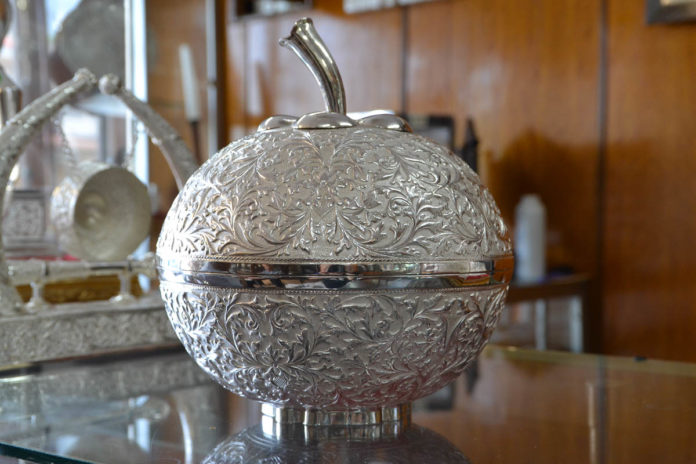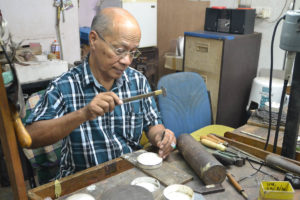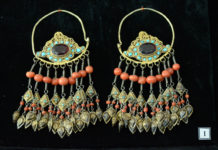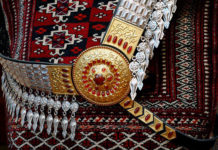
Silver does not occur naturally in the Malay Peninsula and thus silversmithing started relatively late as an offshoot of an established gold working tradition. Raw materials in the form of silver bars, ingots and coins were imported by foreign traders from China. During the fourteenth century, when the Sultanate of Melaka was at its height, silver, along with gold, became a symbol of the wealth, position and power of Malay royalty and the aristocracy who provided patronage to silversmiths.
The status of silver was demonstrated most visibly in the exquisite jewellery made for noblewomen, who would adorn themselves from top to toe with hairpins, combs, earrings, brooches, pendants, necklaces, belts and waist buckles (pending), bracelets, armlets, rings and anklets. Young children often wore protective cylindrical silver amulets and little leaf-shaped modesty discs (caping).
Malay silversmiths also fashioned items for important social and ceremonial use, such as betel sets (tepak sirih) and their accompanying containers and cutters, tobacco boxes, and the hilts and sheaths of swords and daggers. Today, items produced range from the functional to the ornamental and include trays, tea sets, fruit bowls, boxes, ornamental plates, rice scoops, ashtrays and jewellery, as well as specially commissioned items, all with Malay motifs.

The methods and techniques of silversmithing remain largely unchanged. Repoussé (raising designs or reliefs upon a thin sheet of silver by hammering from the back), filigree (pulling silver into fine threads and twisting it into delicate ornamental tracery) and engraving (either by transferring a paper pattern to an object or incising directly) are the most common forms of decorating items.
Kelantan silverware, in particular, is renowned for its intricate and delicate designs and superior craftsmanship. The silverware designs normally portray decorative geometric patterns or stylized floral and leaf motifs, such as the floral motif bunga orka and a cloud-like motif, awan larat.
Although traditional Malay silverware exhibits the best of local craftsmanship, silver smithing is carried on by only a few family-run businesses in Kelantan and Terengganu. Among the older silversmiths sustaining the craft is Mohd Daud bin Yusoff, a master craftsman in Kota Bharu, Kelantan.
Written in collaboration with Fiona Wong




